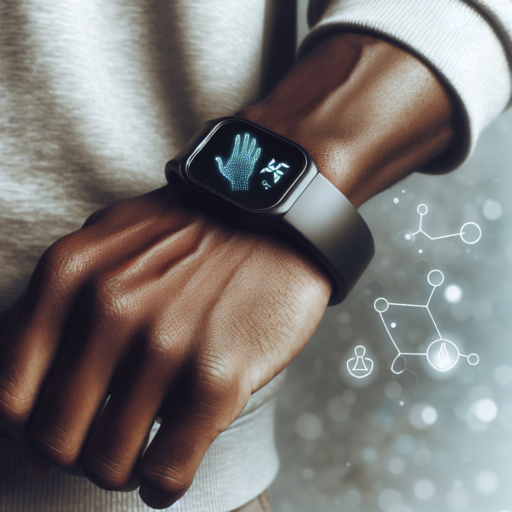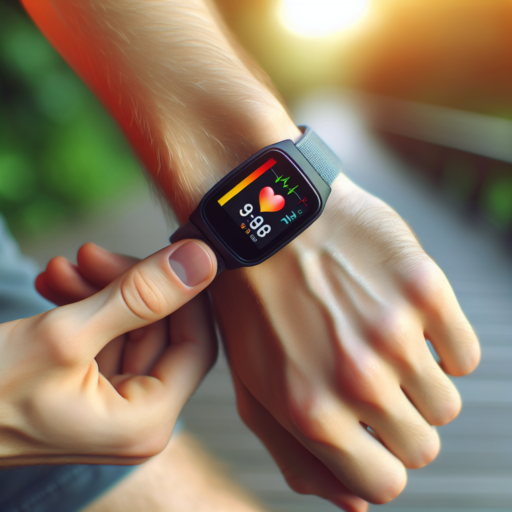What Is a Wrist Thermometer?
A wrist thermometer is a type of thermometric device designed for the convenience of measuring body temperature through the wrist. Unlike traditional thermometers, which may require oral, rectal, or under-arm temperature measurements, wrist thermometers take advantage of the skin’s surface temperature at this specific body part. This innovation in temperature measurement combines comfort with efficiency, making it particularly appealing for use in continuous monitoring situations or for individuals who seek a non-invasive method.
Modern wrist thermometers often incorporate advanced technology to ensure accuracy and reliability. These devices typically use infrared sensors to detect the heat emitted by the body. This approach allows for a quick reading, usually within seconds, thus providing a seamless experience for the user. Moreover, many wrist thermometers come with digital displays and functionalities such as memory recall, allowing users to track temperature changes over time with ease.
The popularity of wrist thermometers has surged, particularly in contexts requiring swift and hygienic temperature assessments. Their use is becoming widespread not only among parents caring for children but also among athletes, healthcare professionals, and in workplace settings. The convenience of having a device that can provide accurate temperature readings without the need for physical contact with potentially infectious areas offers a significant advantage in maintaining health and wellness standards.
Benefits of Using a Wrist Thermometer Over Traditional Methods
Traditional methods of measuring body temperature, such as oral, rectal, or ear thermometers, have been widely used for decades. However, the advent of wrist thermometers has introduced a more innovative and convenient way to monitor body temperature. These modern devices offer several benefits over their predecessors, making them an increasingly popular choice among consumers and healthcare providers alike.
Non-Invasive and Hygienic
One of the primary advantages of using a wrist thermometer is its non-invasive nature. Unlike traditional thermometers that require direct contact with body cavities, a wrist thermometer only needs to be placed on the wrist. This method significantly reduces discomfort and preserves the dignity of the individual, especially in clinical settings or when monitoring the temperature of infants and children. Furthermore, it promotes better hygiene as it minimizes the risk of cross-contamination between different users, which is a common concern with conventional thermometers.
Quick and Accurate Readings
Wrist thermometers are renowned for their ability to deliver fast and accurate temperature readings. Advanced infrared technology empowers these devices to provide precise measurements within seconds, eliminating the wait time associated with mercury or digital stick thermometers. This rapid response is crucial in emergency situations or when conducting health checks in a fast-paced environment. Additionally, the accuracy of wrist thermometers is comparable to that of traditional methods, ensuring reliable results for effective health monitoring and decision-making.
Convenience and Ease of Use
The ease of use offered by wrist thermometers is unparalleled. With simple operational steps, individuals can quickly learn to use these devices without the need for extensive instructions. The convenience of having a thermometer that can be easily worn on the wrist and carried around increases the likelihood of regular temperature monitoring, promoting better health vigilance. Moreover, most wrist thermometers feature user-friendly interfaces, including digital displays that offer clear and immediate feedback, enhancing the user experience.
How Does a Wrist Thermometer Work?
Understanding the mechanics of a wrist thermometer involves delving into the marvel of biometric technology it employs. Unlike traditional thermometers that require oral, rectal, or underarm measurements, wrist thermometers utilize advanced sensors to measure body temperature through the skin. This innovation makes them remarkably user-friendly, offering a hassle-free way to monitor body temperatures.
At the heart of a wrist thermometer’s functionality are infrared sensors. These sophisticated components detect the heat emanating from the blood vessels on your wrist. It is a non-invasive method that captures thermal radiation without direct contact with the internal body. Therefore, it provides a quick and efficient measurement of body temperature, reflecting real-time physiological conditions with impressive accuracy.
Key Components of a Wrist Thermometer
- Infrared Sensors: Capture the body’s heat emanation and convert it into a temperature reading.
- Microprocessors: Process the data collected by the sensors, ensuring precise temperature calculations.
- Display Screen: Shows the temperature reading in an easily understandable format, providing immediate feedback to the user.
Furthermore, the convenience and speed of wrist thermometers are unmatched. With a simple press of a button, these devices can offer accurate temperature readings within seconds, which is indispensable in both healthcare settings and home use. Their design is tailored for regular monitoring, making them an essential tool for maintaining health and well-being.
Step-by-Step Guide to Using a Wrist Thermometer Correctly
Utilizing a wrist thermometer accurately is paramount for obtaining precise temperature readings. This device, known for its convenience and non-invasive nature, has become increasingly popular. To ensure you get the most accurate results, follow this comprehensive, step-by-step guide. It takes into account the nuances of device placement and the importance of ambient temperature.
Preparing the Wrist for Temperature Measurement
Before you start, it’s crucial to ensure the wrist is ready. Avoid any physical activity that might elevate your wrist temperature temporarily. Make sure the wrist is clean, dry, and free from any external substances such as lotions or cosmetics. These preparatory steps are fundamental in avoiding skewed temperature readings. The wrist should also be exposed to the ambient air for about five minutes prior to taking a measurement, balancing the skin’s temperature to the environment.
Correct Placement and Operation of the Wrist Thermometer
- Gently place the thermometer on the inside of your wrist. The sensor should be in direct contact with the skin, avoiding any hairs or obstructions.
- Secure the thermometer correctly, but ensure it is not too tight as to impede blood flow, nor too loose that it might slip during the measurement process.
- Wait for the thermometer to indicate that it’s ready to take a measurement. This usually involves a beep or a flashing light, based on the specific model being used.
- Press the start button and remain still during the measurement process. Moving can introduce inaccuracies.
Following these detailed steps can greatly influence the accuracy of the temperature readings provided by a wrist thermometer. Each phase, from preparation to the actual measurement, plays a critical role in ensuring the device works as intended. Always consult the user manual specific to your model for any additional guidance or troubleshooting steps. Understanding the correct method of using your wrist thermometer is key to ensuring you are well-informed about your health indicators.
No se han encontrado productos.
Comparing the Accuracy of Wrist Thermometers to Other Thermometers
When it comes to measuring body temperature, accuracy is paramount. Wrist thermometers have gained popularity due to their convenience and non-invasive nature. However, when comparing these modern devices to traditional thermometers, several factors come into play. Understanding the nuances of each method can help individuals make informed decisions about their health monitoring practices.
Digital oral thermometers have long been considered a gold standard for their precision and reliability. Studies suggest that they offer a direct measure of the body’s core temperature, which is crucial in medical diagnostics. In contrast, wrist thermometers operate by sensing the temperature of the blood flowing through the wrist. This approach, while innovative, can sometimes lead to variations based on external factors such as ambient temperature and sweat on the skin.
Ear thermometers and infrared thermometers represent another category often weighed against wrist thermometers. These devices, preferred for their speed and ease of use, especially in a pediatric setting, measure the temperature of the tympanic membrane or emit infrared radiation to gauge surface temperature. While they offer convenience, the accuracy can be affected by proper placement and the presence of earwax or other obstructions.
Top 5 Wrist Thermometers for 2023: Features and Reviews
In the ever-evolving world of health technology, wrist thermometers have emerged as a beacon of convenience for continuous monitoring. The year 2023 has brought forward some exceptional models, marrying functionality with sleek design. These devices are not just about taking temperatures; they’re about integrating health monitoring seamlessly into our daily lives. Below, we delve into the standout features and user feedback of the top 5 wrist thermometers gracing the market this year.
1. SmartTemp+ Wristband Thermometer
The SmartTemp+ leads the pack with its accuracy and real-time alerts. Users rave about its discreet vibrations, alerting them to fever spikes without causing undue alarm. Its water-resistant design and long battery life make it an ideal companion for both daily use and travel. Features: Real-time alerts, water resistance, extended battery life.
2. FeverGuard Pro
FeverGuard Pro is celebrated for its precision and its innovative app integration. It tracks temperature trends over time, allowing users to share data directly with physicians. Its comfort-fit design is praised for being barely noticeable during the day. Features: Precision tracking, app integration, comfort fit.
3. TempWatch Active
For the fitness enthusiasts, the TempWatch Active combines temperature monitoring with activity tracking. It notches up the game by offering insight into how different physical activities impact body temperature. Its rugged build is a hit among users who engage in outdoor and high-impact activities. Features: Activity tracking, rugged design.
Exploring the intricacies and user experiences of these top wrist thermometers offers valuable insights. Their integration of health technology into a compact, wearable format is not just impressive but essential in today’s fast-paced lifestyle. Each model brings its unique set of features to the table, catering to a wide array of needs and preferences. Whether it’s for fitness tracking, health monitoring, or everyday convenience, these wrist thermometers stand out as leading choices for 2023.
Common Misconceptions About Wrist Thermometers Debunked
In the world of health monitoring, wrist thermometers have gained popularity for their convenience and non-intrusive method of measuring body temperature. However, several misconceptions surround their use and accuracy. Here, we dispel some of the most common myths, shedding light on the truth about wrist thermometers.
Myth #1: Wrist Thermometers Are Not as Accurate as Traditional Methods
One prevalent misconception is that wrist thermometers cannot measure body temperature as accurately as oral or rectal thermometers. This belief stems from the assumption that the peripheral parts of the body, such as the wrist, do not reflect the core body temperature accurately. However, advancements in technology have significantly improved the precision of wrist thermometers, making them on par with, if not better than, traditional thermometers in some cases. Manufacturers have implemented sophisticated algorithms and sensors that compensate for the temperature differential, ensuring accurate readings.
Myth #2: Wrist Thermometers Can Only be Used in Specific Environmental Conditions
Another misunderstood idea is that wrist thermometers are highly sensitive to the surrounding environment, affecting their accuracy. While it’s true that extreme temperatures can influence any thermometer’s performance, wrist thermometers are designed with robust features to minimize these effects. Many models come with calibration options and environmental adjustment settings, making them versatile tools for temperature measurement in various conditions.
Breaking down these myths not only clarifies the capabilities and reliability of wrist thermometers but also highlights their role in modern health monitoring practices. As technology progresses, it’s crucial to update our understanding and expectations of such devices, allowing for their optimized use in everyday life.
FAQs: Everything You Need to Know About Wrist Thermometers
Certainly, focusing on targeting your desired audience and optimizing for search engines with relevant keywords related to wrist thermometers.
Wrist thermometers have emerged as a cutting-edge tool in the arsenal for personal health monitoring. These innovative devices offer convenience and accuracy for tracking body temperature, a vital sign that can indicate various health conditions. Given the novelty and growing interest in such devices, numerous questions often arise regarding their use, accuracy, and benefits.
How Do Wrist Thermometers Work?
Wrist thermometers function by using advanced sensors that detect the temperature of the blood flowing through the arteries. This is made possible through infrared technology, which captures body heat without requiring direct skin contact. The result is a hassle-free and non-intrusive method for measuring temperature, making it exceptionally suitable for continuous monitoring without causing discomfort or disrupting daily activities.
Are Wrist Thermometers Accurate?
Accuracy is a common concern among potential users of wrist thermometers. These devices are designed to provide results that closely match those of traditional methods, thanks to sophisticated calibration and the incorporation of smart technology. While slight variations may occur, many models offer reliability comparable to oral or ear thermometers, making them a viable option for those seeking convenience without compromising accuracy.
What Are the Benefits of Using a Wrist Thermometer?
- Non-intrusive measurements: Allows for temperature checks without physical contact, enhancing comfort and ease of use.
- Continuous monitoring: Ideal for keeping a close eye on body temperature over time, particularly useful for individuals with health conditions that require regular checks.
- Convenience: Eliminates the need for multiple devices, consolidating health monitoring to a single, wearable device that can be worn throughout the day.
Tips for Maintaining and Cleaning Your Wrist Thermometer for Longevity
Maintaining and cleaning your wrist thermometer regularly is crucial to ensure its longevity and accuracy. The nature of this device requires careful handling and specific cleaning routines to keep it in optimal condition. Here are some practical tips that can help you maintain your wrist thermometer effectively.
Regular Cleaning after Every Use
Cleaning your wrist thermometer after each use is essential to prevent the buildup of dirt and germs. Use a clean, soft cloth lightly dampened with either isopropyl alcohol or a mixture of mild soap and water. Gently wipe the surface of the thermometer, paying special attention to any crevices where dirt might accumulate. Avoid using abrasive cleaners or submerging the device in water to prevent damage to its electronic components.
Storing Your Wrist Thermometer Properly
When not in use, store your wrist thermometer in a cool, dry place away from direct sunlight or any harsh environmental conditions. This precaution helps to preserve the battery life and ensures that the device remains accurate over time. It’s also advisable to keep it in its original case or a soft pouch to protect it from bumps and scratches. Proper storage conditions can significantly extend the useful life of your wrist thermometer.
By following these maintenance and cleaning tips, you can help ensure that your wrist thermometer remains a reliable health tool for years to come. Regular upkeep not only contributes to its longevity but also to the accuracy and reliability of the temperature readings it provides. Remember, the key to extending the lifespan of your wrist thermometer lies in the careful and consistent execution of these simple maintenance routines.
Where to Buy the Best Wrist Thermometer
Locating the ideal place to purchase the best wrist thermometer can seem daunting with so many retailers both online and in physical stores. These modern devices have gained popularity for their non-invasive, quick, and accurate temperature readings, making them a must-have tool for families, healthcare practitioners, and fitness enthusiasts alike. Esteemed online marketplaces and specialized health gadget shops stand out as primary venues for these innovative thermometers.
Trusted Online Marketplaces
When it comes to convenience and variety, online marketplaces like Amazon, eBay, and Walmart’s online platform are unbeatable. Here, you can find a diverse selection of wrist thermometers from reputable brands. These platforms also offer the benefit of customer reviews, allowing you to gauge the effectiveness and reliability of the product before making a purchase. Keep an eye out for verified purchase reviews to ensure authenticity.
Specialized Health Gadget Stores
For those who prefer a more hands-on shopping experience, specialized health gadget stores, both online and physical, provide a curated selection of wrist thermometers. These retailers often offer detailed product demos, personalized recommendations, and the opportunity to ask questions about the product’s functionalities. Places like Best Buy or specialized local health stores often conduct in-depth product training for their staff, ensuring you receive knowledgeable advice tailored to your needs.




